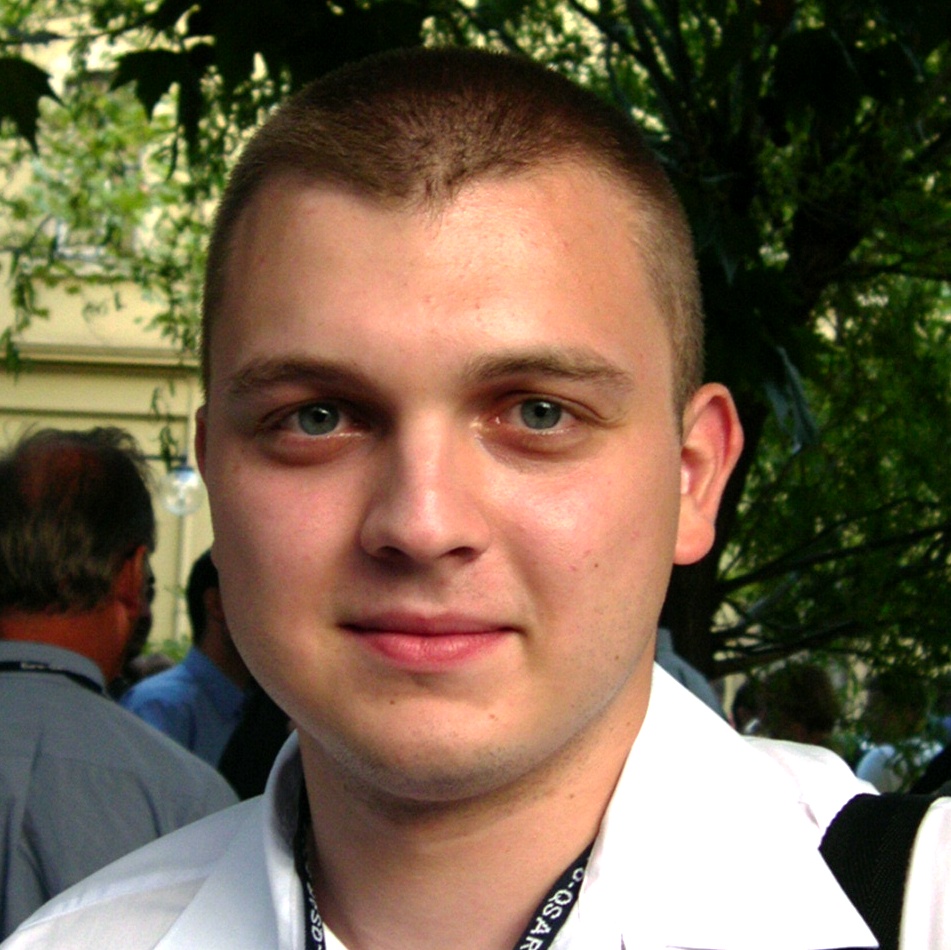
|
|
|
PA10 Pathway Analysis and Drug Targets |
|
Deadline for applications: October 8th 2010 Notification of acceptance date: October 11th 2010 Course date: October 18th - October 20th 2010 |
Instructors: |

Alexander Kel is one of the originators of computational approaches for recognition and analysis of promoters and enhancers in genomes. He studied mathematical biology in Novosibirsk State University in Russia. After several postdoc positions in USA, Italy and Germany, he received a position of Senior Vice President R&D in the leading bioinformatics company BIOBASE in Germany and recently has build his own company, geneXplain, focusing on personalized pharmacogenomics. During his career Alexander Kel was involved in research in practically all fields of bioinformatics, from molecular evolution, and structural biology to database development, application of machine learning techniques and sequence analysis. In the recent years his main research topics are in various fields of system biology including structural analysis of signal transduction and gene regulatory pathways and dynamic modelling of regulatory circuits of such complex cellular processes as cell cycle, differentiation and apoptosis. Alexander Kel has taught Bioinformatics courses at the IGC, both in PGBIOINF and GTPB. He is also a founding member of the *PathProt* forum on Pathway Analysis in Proteomics. GenExplain GmbH, Wolfenbuettel, Germany |

Alexey Zakharov obtained the PhD in Bioinformatics from the Institute of Biomedical Chemistry (IBMC) of Russian Academy of Medical Sciences in 2008 and currently holds the position of Senior Scientist in Department for Bioinformatics of IBMC. His studies are focused on computational drug discovery and cheminformatics. Dr. Zakharov is an expert in the field of quantitative structure-activity relationships (QSAR). He developed computer program GUSAR (General Unrestricted Structure-Activity Relationships), which can be applied to the analysis of many different QSAR/QSPR problems. He took part in three European projects funded by FP6, FP7 and International Science and Technology Center. Dr. Zakharov is a co-author of over ten papers published in peer-reviewed journals. He took part in the Special Course "Bioinformatics and Computer-Aided Drug Discovery" for graduate students of Medical-Biological Faculty of Russian State Medical University. Since 2007 Alexey Zakharov is a Secretary of Russian Section of The Cheminformatics and QSAR Society. In 2006, 2007 and 2008 he was awarded by the first price for young scientists at the Symposia "Bioinformatics and Computer-Aided Drug Discovery" in the framework of Russian National Congresses "Man and Drugs". Institute of Biomedical Chemistry, Rus. Acad. of Med. Sci., Moscow, RU |

Roman Zubarev studied technical physics in the Moscow Engineering Physics Institute and received his PhD in Ion Physics from the Uppsala University, Sweden. After postdoc training in Fred W. McLafferty's group at the Cornell University in USA, he became associate professor at the Chemistry Department in Odense, Denmark. In 2002 he came back to the Uppsala University as full professor, and became engaged in proteomics work. He is a Director of HUPO, and an awardee of the prestigious Carl Brunnee award (ISMS, 2006) and Biemann medal (ASMS, 2007) for his work in mass spectrometry. Roman Zubarev has published more than 130 peer-reviewed papers, and has several patents. He teaches courses related to mass spectrometry and proteomics analysis. He is also a founding member of the PathProt forum on Pathway Analysis in Proteomics. Karolinska Institutet, Stockholm, SE |
Topics:Topological properties of biochemical and regulatory networks Dynamic modeling of pathways. Integration pathway bioinformatics and chemoinformatics. Course description:New high-throughput methods allow for the generation of massive amounts of molecular biological data. These, mainly phenomenological, data are often difficult to relate with the activation/inhibition of particular signal transduction pathways and/or transcriptional regulators. A way to facilitate data interpretation is to construct gene regulatory network models that include signal transduction mediators, transcriptional regulators and target genes. This is a complex task, not only because of the huge number of molecules involved, but also because of variations across tissues, developmental stages and physiological conditions. These networks hold the key to the understanding of the regulatory processes within a cell, the processes governing human physiology and homeostasis and thus the delicate balance between health and disease. These networks are characterized by complex, hierarchical structures and by multiscale temporal and spatial behaviors.In the training course "Pathway Analysis and Drug Targets" we will approach the analysis of regulatory networks from several practical angles. First of all, we will look at the methods of reconstructing the gene regulatory networks from gene expression data through reverse engineering. It will be followed by methods of analysis of topological properties of biochemical and regulatory networks. This will lead us to the application of such methods for revealing key nodes in networks as potential biomarkers or drug targets. We will study how to do the validation of such drug targets with the help of dynamic modeling of the network systems. We will also look at the methods of chemoinformatics and will try ourselves to analyze the list of validated drug targets and identify novel drug compounds by virtual screening of millions of available chemical molecules. We will show real case examples of application of these methods for identification of disease related biomarkers and drug discovery. We will be using the following software packages (and more!), in our hands-on training sessions: CellIllustrator, BioUML, GenExplain, NetFlowEx, PASS, GUSAR, Pathway Analysis Engine |
|
Detailed Program |
|
Instituto Gulbenkian de Ciência, Apartado 14, 2781-901 Oeiras, Portugal Last updated: October 1st 2010 |